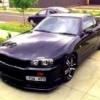How To Tune Safc Neo? Running A Little Rich.
Announcements
-
Similar Content
-
Latest Posts
-
By joshuaho96 · Posted
It's excellent but I'm still breaking it in so I'm not 100% sure where it'll end up. I would say it's about 15% heavier than stock and the smoothness of the slip zone is quite progressive but you need to be a little patient compared to stock or it'll bite hard and stall. Stock I got away with absolutely horrid clutch control. Like I said before I couldn't even tell where the clutch would grab when it was stock so releasing way too quickly without enough revs it would just slip and the revs would drop lower than ideal but that would be the end of it. Currently there's a bit of a nasty clutch judder if I don't apply enough revs + find the exact wrong point of the slip point in the clutch pedal but it feels like it's slowly resolving as I drive it more. I would not recommend the competition clutch unless you really need the extra clamp force. I think this clutch combined with the Nismo operating cylinder is going to be exactly what I want. Enough bite that you need to remember the release point to avoid stalling or rough shifts, but progressive enough that it's not hard to drive by any means and not heavy at all. I tried a "super single" clutch on my friend's 997.2 Turbo 6MT and that was absolutely horrid. It runs an electrohydraulic power steering pump for the clutch power boost so there's zero feedback in the clutch pedal and there was a horrific clutch shudder well after break-in due to the lack of marcel springs or hub springs in the friction disk. It felt like the slip zone was the thickness of a single toe twitch as well so it was almost impossible to avoid stalling it unless you gave it a ton of revs and just dumped the clutch instead of trying to be smooth with it. I was terrified of pulling out in front of traffic. I have also tried some kind of "super single" on an EK9 and that makes this twin plate Coppermix look like a stock clutch. Releasing the clutch pedal even slightly too quickly feels like you're getting rear-ended. The pedal is extremely heavy as well and there's no vacuum assist like the GTR. -
Yeah, well I was probably way underguessing the $300 figure anyway. Just multiplied a "normal" by 4 for the purposes of pointing out it's not cheap, particularly if it has to be repeated.
-
By joshuaho96 · Posted
We have an alignment shop out here that does what you're talking about but he wants like 800 AUD a pop. DIY is "cheaper" but once you start accounting for the value of your time I'm not sure it's worth it. -
The main catch phrase for any car is "the eye of the beholder", and "personal tastes and preferences" And as for the plastic "flares", I honestly think they look cheap and tacky, and I cannot see them aging well, maybe if they were body colour they might look better to my eyes, but, I would still prefer it the were more like the older WRX STI models that had the wider body metal panels In saying all this 5hit, I wouldn't buy a new WRX again, even if it had the wide body metal panels
-





Recommended Posts
Create an account or sign in to comment
You need to be a member in order to leave a comment
Create an account
Sign up for a new account in our community. It's easy!
Register a new accountSign in
Already have an account? Sign in here.
Sign In Now